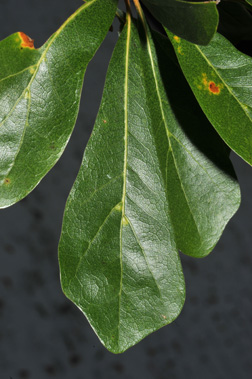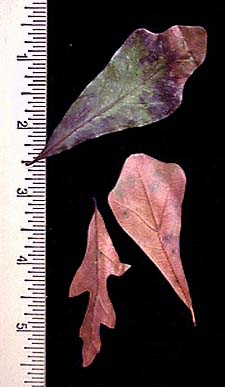


Water oak is common along waterways and adjacent lowlands in the U.S. southeast. Water oak plays a valuable role in wetland ecosystems, providing both wildlife benefits and quality wood products.
Light ![]()
Water oak is shade intolerant and is best regenerated by clearcutting.
Water
![]()
![]()
![]()
![]()
![]()
![]()
Water oak occurs on bottoms and on moist uplands; very commonly invades old fields. Water oak is a common ornamental throughout the South that adapts to a wide variety of soils.
Growth
![]()
Size
![]()
A medium sized tree with a slender bole and rounded crown with ascending branches.
Timber Value ![]()
Water oak is used for lumber, veneer for plywood used in making fruit and vegetable boxes, and fuelwood.
Wildlife Value ![]()
Water oak provides food, cover, and habitat for a variety of species. Cavity nesting birds, e.g., red bellied woodpecker, great crested flycatcher, hairy woodpecker, use water oak snags to nest in.
Attracts squirrels, flying-squirrels, chipmunks, waterfowl, bluejay, turkey, bobwhite, deer
Fun Facts
When young, water oak leaves are nearly evergreen; leaves of mature individuals persist long into the winter. Water oak is a principal alternate host to the fusiform rust fungus that debilitates pines; it is only minorly affected by the rust itself.
Latin Meaning
Quercus: Latin name /
nigra: black
Home - I.D. Fact Sheet - USDA Silvics Manual - Additional Silvics
Landowner Factsheets © 2004 Virginia Tech Forestry Department, all rights reserved. Text, images, and programming by: Dr. Jeff Kirwan, Dr. John R. Seiler, John A. Peterson, Edward C. Jensen, Guy Phillips, or Andrew S. Meeks.